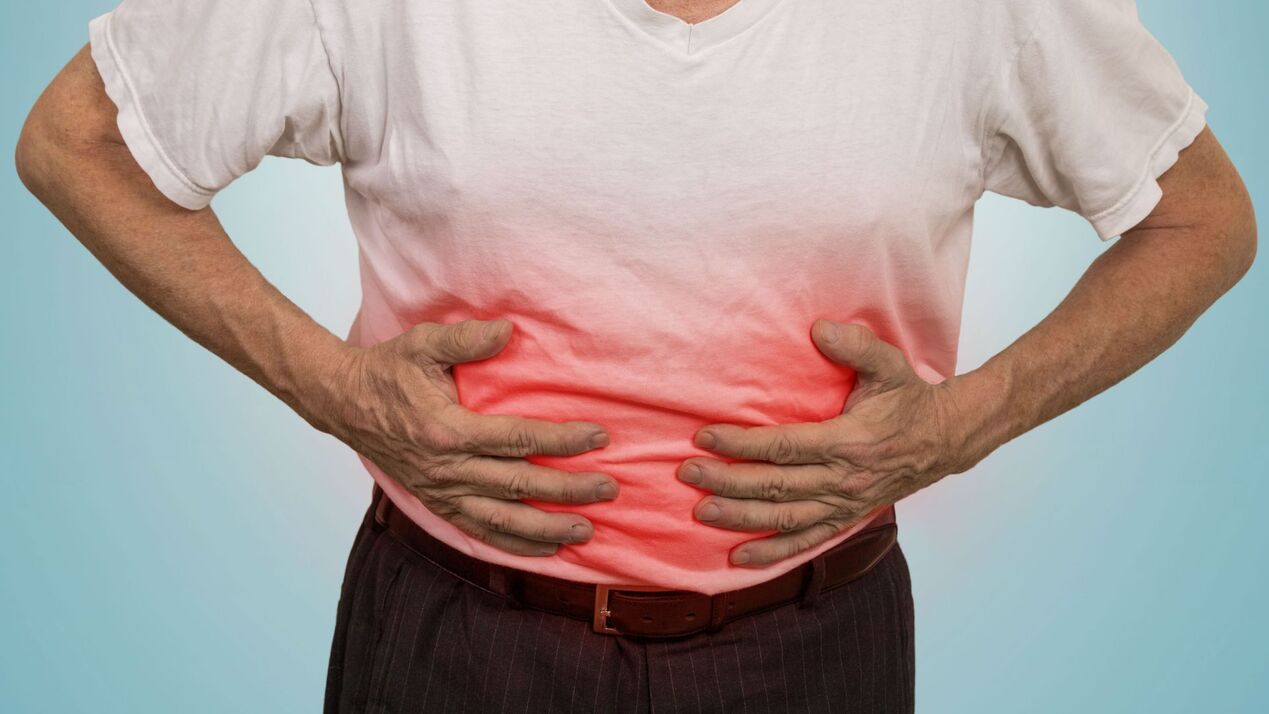
Pancreatitis is inflammation of the pancreas. It produces enzymes involved in the breakdown of proteins, fats and carbohydrates. It also makes insulin, which regulates blood sugar levels. Malnutrition, cravings for spicy and fatty foods, smoking and alcohol abuse, uncontrolled medication intake - all of these factors provoke the development of pancreatitis.
How to recognize pancreatitis and what diet patients should follow, we will tell in this article.
How do you know if you have pancreatitis?
Pancreatitis can be acute or chronic. Its symptoms vary depending on the form.
The acute form is manifested by severe belt pain in the upper abdomen. Pain syndrome occurs when you have eaten some fat or drunk alcohol. Nausea and vomiting begin, bowel problems.
In chronic pancreatitis, the pain is localized in the top of the peritoneum, radiating to the back, left side of the chest, lower abdomen. Discomfort is also observed after consuming fatty, heavy food, alcohol as well as on the background of frequent stress.
Signs of acute pancreatitis:
- Severe persistent pain around.
- Increased body temperature.
- Blood pressure rises.
- Pale or yellow complexion.
- Intense vomiting, not soothing.
- Constipation, flatulence, salivation.
Signs of chronic pancreatitis:
- Stomach pain after eating. Local or surrounding, extending to the back.
- Heat causes abdominal pain, while cold is relief.
- The patient occupies a forced position - the knee-elbow position, or a sitting position with a forward bend.
- Vomiting, diarrhea.
- Weight loss.
It does not matter what kind of illness you have - acute or chronic. You need to be selective about the food you eat and stick to your diet.
Which diet is indicated for pancreatitis
To prevent exacerbations of pancreatitis, the following dietary changes are recommended:
- Meals 4-5 times a day with an even distribution of fatty foods in the diet;
- refusal to overeat;
- balanced diet;
- saturation of saturated fat and cholesterol;
- inclusion in the diet of a sufficient amount of a variety of vegetable fibers - grains, vegetables and fruits;
- Eat a variety of foods that are low in saturated fat and cholesterol (unrefined vegetable fats are only somewhat limited in overweight people).
Which products are allowed
It is a mistake to think that patients with pancreatitis are "deprived" of tasty and varied food. In fact, the list of permitted foods is quite extensive.
So you can eat:
- Dry white bread, cookies.
- Vegetable soups with noodles, semolina, oatmeal.
- Lean meat.
- Lean fish, aspic.
- Porridge (buckwheat (pureed), oatmeal, semolina, rice).
- Cottage cheese, cereal puddings and stews.
- Milk and fermented milk products not more than 2% fat.
- Egg.
- Vegetables.
- Ripe and non-acidic varieties of fruits and berries.
- Butter and vegetable oil.
- Weak tea, still mineral water, rosehip broth, juice diluted with water in the ratio 50 to 50).
Food must be wiped off, boiled, steamed. You can not eat hot and cold food. The optimum temperature is 30-50 ° C. Do not overeat, eat fractions.
What foods should be discarded?
A worsening occurs when nutrition and intake are disrupted:
- fat, fried food,
- hot spices,
- a large number of raw vegetables, fruits,
- muffins and sweets (cakes, pies, pastries),
- alcohol,
- carbonated drinks,
- Whole milk
Trial menu for patients with pancreatitis
- Breakfast: Milk porridge / milk soup with noodles / cooked noodles. Tea with milk. Dry bread.
- Dinner: Vegetable mash soup, boiled rice / mashed potatoes, boiled fish / meat. Tea.
- Afternoon snack: Curd pots, jelly / jelly.
- Dinner: vegetable salad with olive oil, cooked meat / fish, jelly.
Snacks are required. Eat baked apples, low-fat cottage cheese, biscuits between meals.
Note that medication and diet are equally important. Nutrition therapy brings the pancreas back to normal and avoids an exacerbation of the disease. In this case, do not engage in self-treatment! If you have symptoms of pancreatitis, consult your doctor.

































































